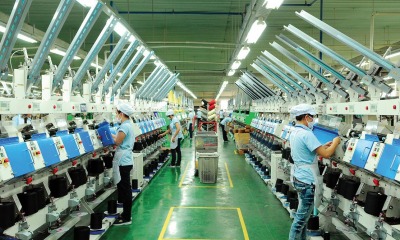Business
Running a Business? How to Minimize Supply Chain Issues

Supply chain issues have always been an issue for businesses but over the last few years, the effect and widespread issues from shortages and manufacturing plant shutdowns, and understaffing have been staggering. As an entrepreneur, there are so many moving parts to running a successful business. With all of the potential challenges that can arise, supply chain issues became one of the most common challenges for almost every type of business within the past two years. Even though it might be inevitable for many entrepreneurs to deal with, there are ways you can minimize the challenges and consistently provide excellence to your customers. Consider the following tips to get started.
Consider What’s Accessible
When it comes to creating a product, you may have a supplier and specific supplies that you’ve found to work in the past. However, maintaining the supplier and specific resources to create the product can put you in a tight spot when supply chain issues arise. When you’re used to placing an order with a specific company, there’s a certain level of convenience that comes with the process. However, it might be best to consider what’s accessible to you immediately. This can mean going through a different supplier or even making changes to the resource you’re using for the product. If you need to change the type of materials you’re using in order to get the order out, make the changes and disclose them to your customers. If you’re a clothing designer and need to use a different type of decorative silk for your garments, disclose that in the description so your customers know what to expect. Though this may change your customer’s orders, it at least provides you with something that you can actually sell compared to waiting for your original supplier and supply to become available. Use what is accessible to you in order to get the orders fulfilled.
Find Additional Suppliers
It’s nice to be loyal to a specific supplier in order to get the materials you need. However, desperate times call for desperate measures. Consistent supply chain issues are equivalent to dealing with a desperate time. You don’t have to completely ditch your old manufacturer. However, look for additional suppliers that can meet your deadlines in the short term. When looking for suppliers, consider the type of product being shipped to you and the travel across borders required to get to you. Over the last few years, many embargos and laws regarding the transportation of goods across borders have changed significantly. Because of this, the shipment of your products may be delayed.
Stock Up on Inventory
When you’re able to get your hands on certain materials you need and you have the resources for it, stock up. It’s especially good to stock up when you know you’re dealing with precious commodities. That being said, you need to have the storage space to store extra materials. Additionally, continue ordering the materials for your next batch, that way you always have a little bit of extra material if an emergency happens and you need additional material or if you can’t get all of the material sent to you. Avoid the temptation to only use some of the materials. There is often leftover material after the product is created, however, it’s important not to be wasteful with any of your materials. If there’s material leftover, find a way to repurpose and use it again to fulfill other orders. Many companies have products that use the main part of the material and then a secondary product that uses the scraps of the material. This minimizes the waste and can help improve your cost to revenue ratio. If you don’t currently offer a product that uses the leftover material or if you don’t have the resources to use that material, consider working with another company that may want your leftover materials. This can be a recycling company or it can be a company in a slightly different industry or market base that would benefit from buying your extra raw material for the use of their products.
Place Orders in Advance
Don’t wait until you run out of certain materials to place an order. Instead, try your best to place orders in advance. It’s much better to have more than enough than to completely run out with no change in sight. If you aren’t sure how long it will take before you run out of material, consider asking your team to estimate the time it will take before each material is complete, and work with your marketing team to estimate how long it will take before you need a new batch of products ready to be sold. Keep in mind that in addition to the time it takes to create the product, your existing stock may take a while to get through, and thus you may have extra time before you need more material. That being said, to prevent supply chain issues, it’s ideal to still order the product ahead of time. Communicating with your supply manufacturer to understand their challenges and how long things take to go from being ordered to being shipped can help you understand how much of a leeway you need when ordering new products.
When you’re an entrepreneur, it’s really important to focus on solutions. Problems will always manifest. If you focus on the problems, you’ll only attract more. Thankfully, the same holds true for solutions. When you focus on the solutions, get creative and become resourceful, you’ll find new ways to run your business in a more cost-effective and efficient manner. As the world continues to shift and deal with the global supply chain issues, utilize these tips in order to still run your business with excellence.
-

 Tech11 years ago
Tech11 years agoCreating An e-Commerce Website
-

 Tech11 years ago
Tech11 years agoDesign Template Guidelines For Mobile Apps
-

 Business6 years ago
Business6 years agoWhat Is AdsSupply? A Comprehensive Review
-

 Business10 years ago
Business10 years agoThe Key Types Of Brochure Printing Services
-

 Tech8 years ago
Tech8 years agoWhen To Send Your Bulk Messages?
-

 Tech5 years ago
Tech5 years ago5 Link Building Strategies You Can Apply For Local SEO
-

 Law5 years ago
Law5 years agoHow Can A Divorce Lawyer Help You Get Through Divorce?
-

 Home Improvement6 years ago
Home Improvement6 years agoHоw tо Kеер Antѕ Out оf Yоur Kitсhеn











































